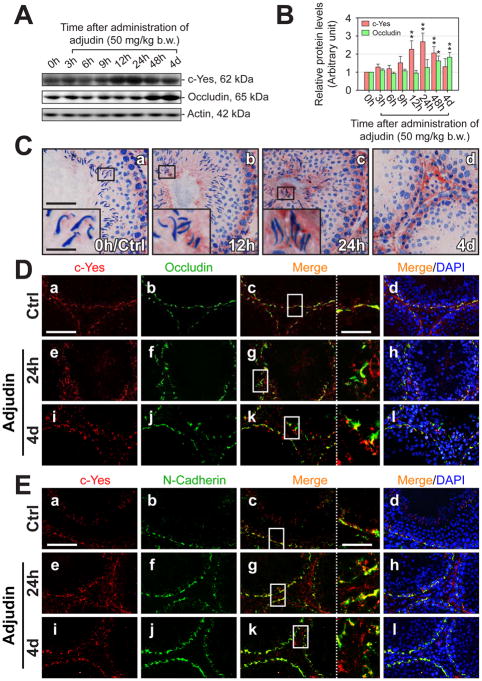Fig. 3. Changes in the steady-state level of c-Yes and its association with TJ and basal ES proteins at the BTB during adjudin-induced anchoring junction restructuring and germ cell depletion.
(A) Testis lysates (50 μg protein) were used for immunoblotting to assess changes in the steady-state protein level of c-Yes, with occludin served as a positive control and actin a loading control. An induction of c-Yes expression was observed during the 12- to 48-h period after treatment. (B) A histogram with each bar shown as a mean ± SD of n = 3 rats using immunoblots such as those shown in (A). The protein levels of c-Yes and occludin at 0 hour were arbitrarily set at 1 and values were normalized and plotted against actin (*, P<0.05; **, P<0.01). (C) IHC staining of c-Yes obtained from the same rats after adjudin treatment used for immunoblot analysis. Within 12-h of treatment, some elongating/elongated spermatids were found to be misoriented and were depleting from the epithelium, even in a stage VII (C, b) tubule, and a considerable increase in c-Yes expression at the apical ES was detected in “prematurely” departing elongating spermatids in a stage VI (C, c) tubule (a-c, inset, magnified view of boxed area in the same panel). By 4 days following treatment, when virtually all tubules were devoid of elongating/elongated spermatids, c-Yes staining persisted at the BTB site. Bar in a (also applies to b-d) = 80 μm. Bar in inset in a = 20 μm, also applies insets in b and c. (D-E) IF staining showing c-Yes (red, Cy3) and BTB proteins occludin (green, FITC in D) and N-cadherin (green, FITC in E), and changes in their colocalization. Bar in a (also applies to b-l) = 120 μm. The staining patterns of c-Yes became “puffy” and less “compact” in the treatment groups versus control (normal) rats, and as a result, the association of c-Yes with these two BTB markers appeared to be considerably reduced, as shown in c, g, and k (inset at the right-hand partition with dotted lines is magnified view of boxed area in the same panel; bar = 40 μm). h, hour(s); d, day(s).

